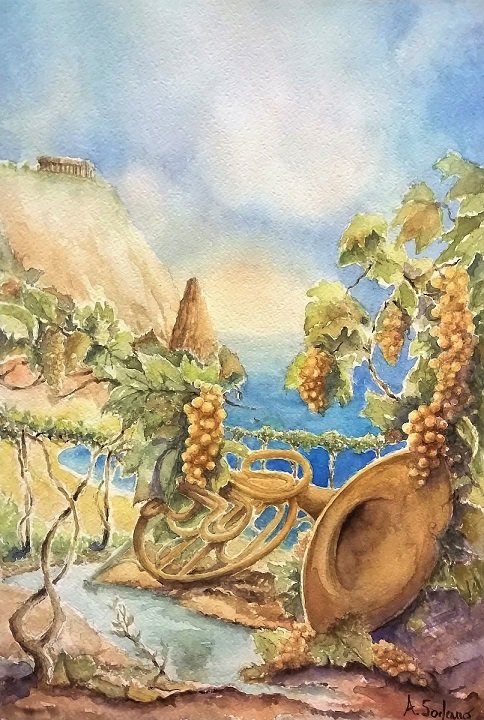
Magic of french horn

2 0 1 8
watercolor on paper private collection
Condivido un lavoro ad acquarello che ha origine da una commissione di un mio amico: Andrea Antonelli Maestro di corno e direttore di una scuola di musica, con il quale ho anche molti rapporti artistici.
Conoscendo la mia passione per la musica, un giorno si è presentato nel mio studio con il suo corno, non sabbiato.
Mi ha chiesto se potevo rappresentare una scena che potesse valorizzare lo strumento e un aspetto della sua vita.
Attraverso le nostre chiacchierate è emerso che suo nonno, viticoltore, nella sua produzione avesse un ottimo vino bianco denominato Moscato.
Vitigno particolarmente adatto al clima tirrenico nella zona pianeggiante di Terracina.
La mia l'idea è stata quella di raccontare una bella storia a colori, protagonisti, l'uva tipica del Moscato e il corno che con il suo colore dorato richiama quello dell'uva, con mare e montagna dominata dal famoso tempio romano di Giove Anxur.
Le difficoltà di disegnare il corno sono state ardue, e soprattutto la scelta della composizione, che ho cercato di rendere più naturale possibile.
Il mio amico Andrea ha apprezzato molto e mi auguro che anche approvi @sciack la mia ricerca sul corno francese.
Un abbraccio in musica.
Armando


I share a watercolor work that originates from a commission of a friend of mine: Andrea Antonelli Master of Horn and director of a music school, with whom I also have many artistic relationships.
Knowing my passion for music, one day he showed up in my studio with his horn, not sanded.
He asked me if I could represent a scene that could enhance the instrument and an aspect of his life.
Through our talks it emerged that his grandfather, winemaker, in his production had an excellent white wine called Moscato.
Vine particularly suited to the Tyrrhenian climate in the area of Terracina.
My idea was to tell a beautiful story in color, protagonists, the typical Moscato grape and the horn that with its golden color recalls that of grapes, with sea and mountains dominated by the famous Roman temple of Jupiter Anxur.
The difficulties of drawing the horn were difficult, and above all the choice of composition, which I tried to make as natural as possible.
My friend Andrea has appreciated and I hope that also @sciack approve my research on the French horn.


Il corno francese è uno strumento aerofono, che adoro, fa parte della categoria degli ottoni a bocchino. Fin dalla sua origine, nella seconda metà del Seicento si usava il bocchino soffiando dentro per emettere il suono, il corno veniva usato nella caccia dai cavalieri,con una sola mano, avendo l'altra impegnata per gestire il cavallo.
Il suo primo antenato veniva ricavato, svuotato e lavorato, dalle corna vaccine
La meravigliosa struttura del corno francese che conosciamo ha una genesi ancora incerta, comunque intorno alla metà del Settecento, il corno arriva alla sua completezza con le valvole, tre o cinque che azionate con la mano sinistra deviano l'aria in tubature per cambiare l'altezza del suono, la nota che si vuole suonare.
Il corno più usato prevede la quarta valvola che viene azionata dal pollice per deviare l'aria in cilindri accordati in FA o in altri in SIb.
La vibrazione delle labbra sul bocchino emettono primo suono, esso può avere sezione a tazza o a V, e la parte finale dell'ottone è chiamata campana, un ampio e caratteristico padiglione, termine che vale per tutti gli strumenti aerofoni.
Molto importante anche la mano destra, con la quale il cornista, inserendola nella campana, determina quel suono ovattato e lo scurire o stoppare di esso, come avviene con la sordina nella tromba.


The french horn is an aerophone instrument, which I love very much, it is part of the category of mouthpiece brass instruments. Since its origin, in the second half of the seventeenth century the mouthpiece was used blowing in to emit the sound.
At that time it was used in hunting by knights, with one hand, having the other engaged to manage the horse.
His first ancestor was the horn, emptied and worked, with cow horns
The wonderful structure of the French horn we know has a still uncertain genesis, however around the middle of the eighteenth century, the horn arrives to its completeness with three or five valves that operated with the left hand divert the air into pipes to change the height of the sound, the note you want to play.
The most used horn is the fourth valve that is operated by the thumb to divert the air into cylinders tuned into FA or others into SIb.
The mouthpiece, through the vibration of the lips emits the first sound.
It can have a cup or V-shaped section, and the final part of the brass is called a bell, a large and characteristic pavilion, a term that applies to all the instruments.
Very important is also the right hand, with which the cornist, inserting it into the bell, determines that muffled sound and darkens or stops it, as occurs with the muted sound in the trumpet.
Nell'orchestra il corno può essere usato come strumento armonico o solista, il suo timbro funge da legante con gli altri strumenti e talvolta emerge con particolare efficacia nel Barocco, Classico e Romantico.
Molti grandi compositori come ad esempio Wagner, Brahms e Mozart scrissero pariture per corno,quest'ultimo lo valorizzò notevolmente con il mitico concerto n°1 K 412 scritto nel 1782 e che mette alla prova i cornisti più abili.
Una nota curiosa sono i divertenti commenti che Mozart scrisse tra le note della partitura, nei quali prende in giro, il povero cornista alle prese con passaggi diabolici scritti dalla fantasia dell'inimitabile genio della musica.

In the orchestra the horn can be used as a harmonic or solo instrument, its timbre acts as a binder with the other instruments and talvota emerges with particular effectiveness in the Baroque, Classic and Romantic.
Many great composers such as Wagner, Brahms and Mozart wrote pariture for horn, the latter greatly enhanced it with the legendary concert n°1 K 412 written in 1782 and which tests the most skilled cornisti.
A curious note is the amusing comments that Mozart wrote among the notes of the score, in which he teases, the poor cornista struggling with diabolic passages written by the imagination of the inimitable genius of music.
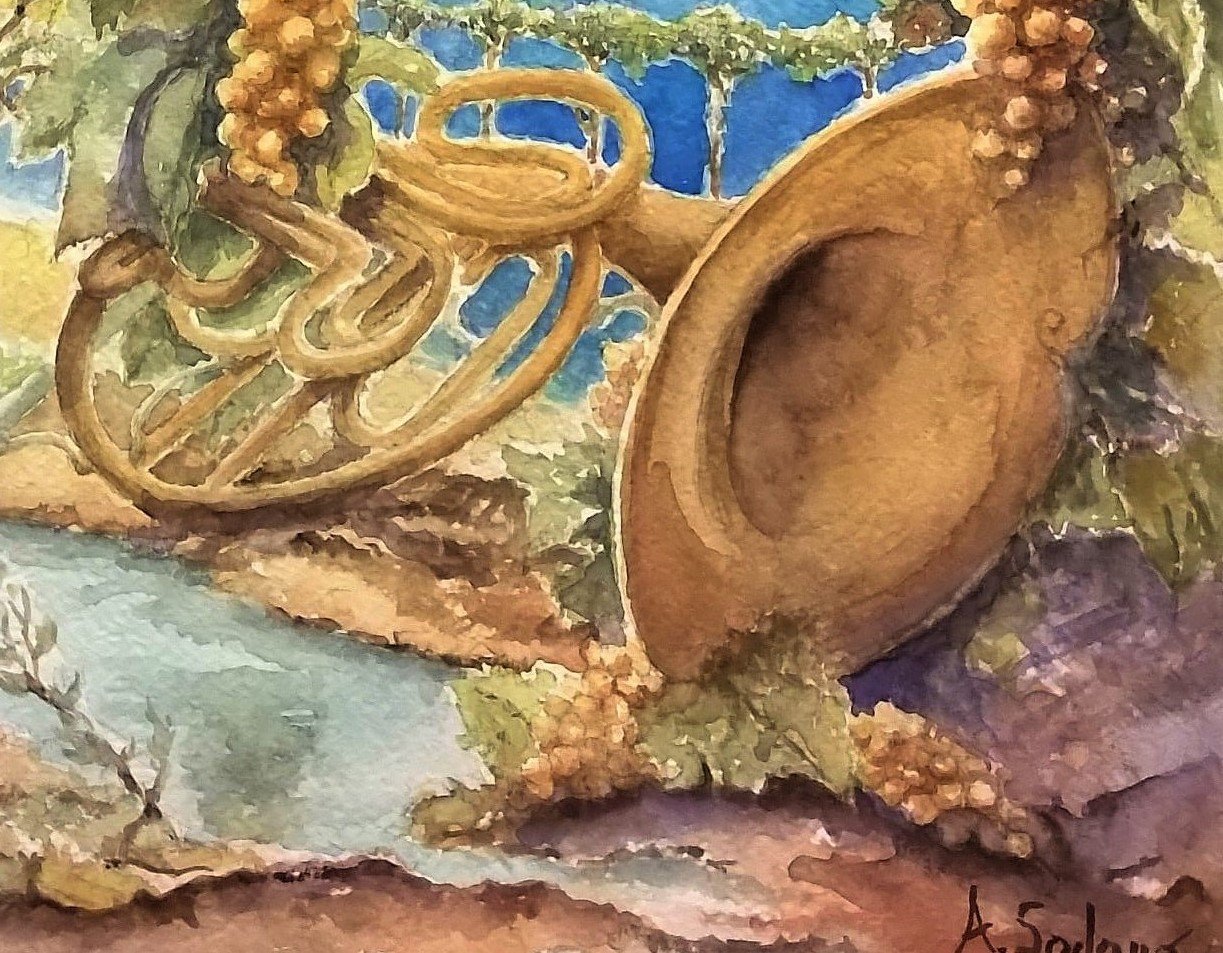
detail of the brass horn
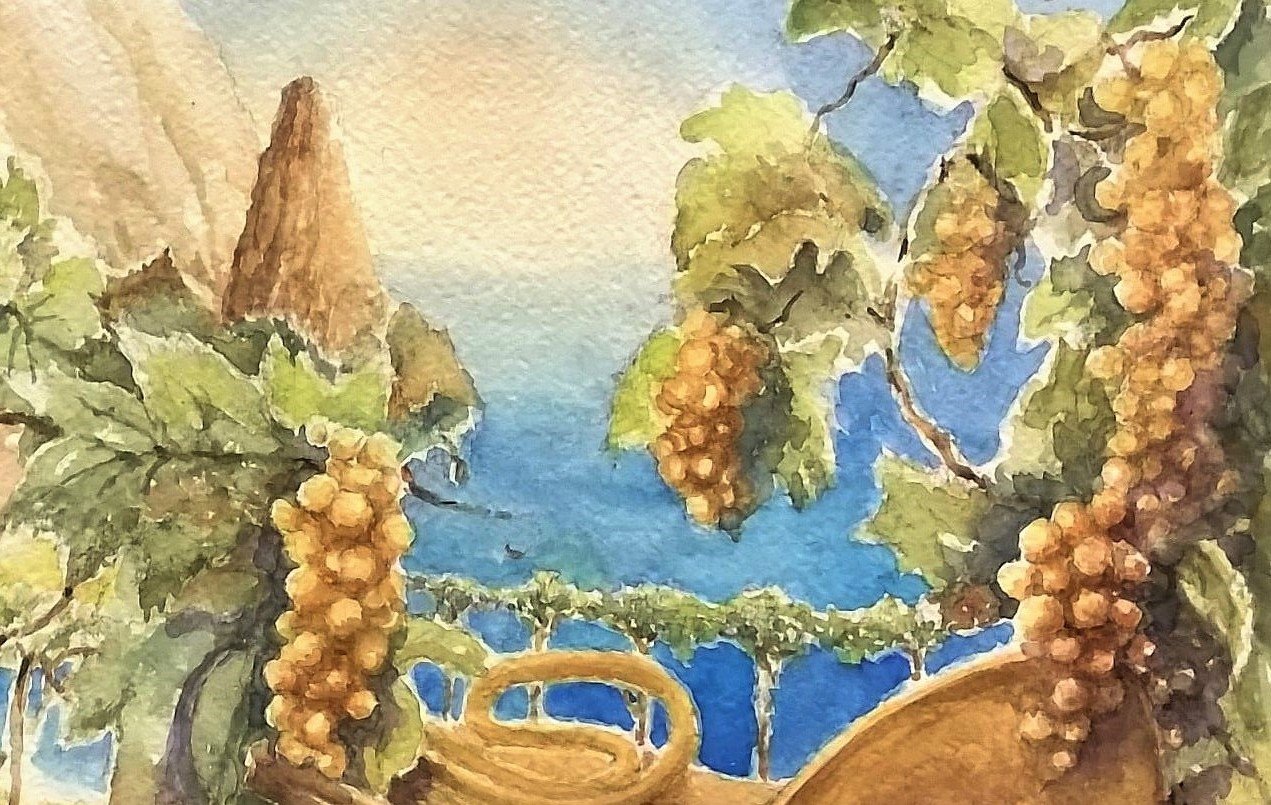
detail-2
Moscato grapes with characteristic round and small beans
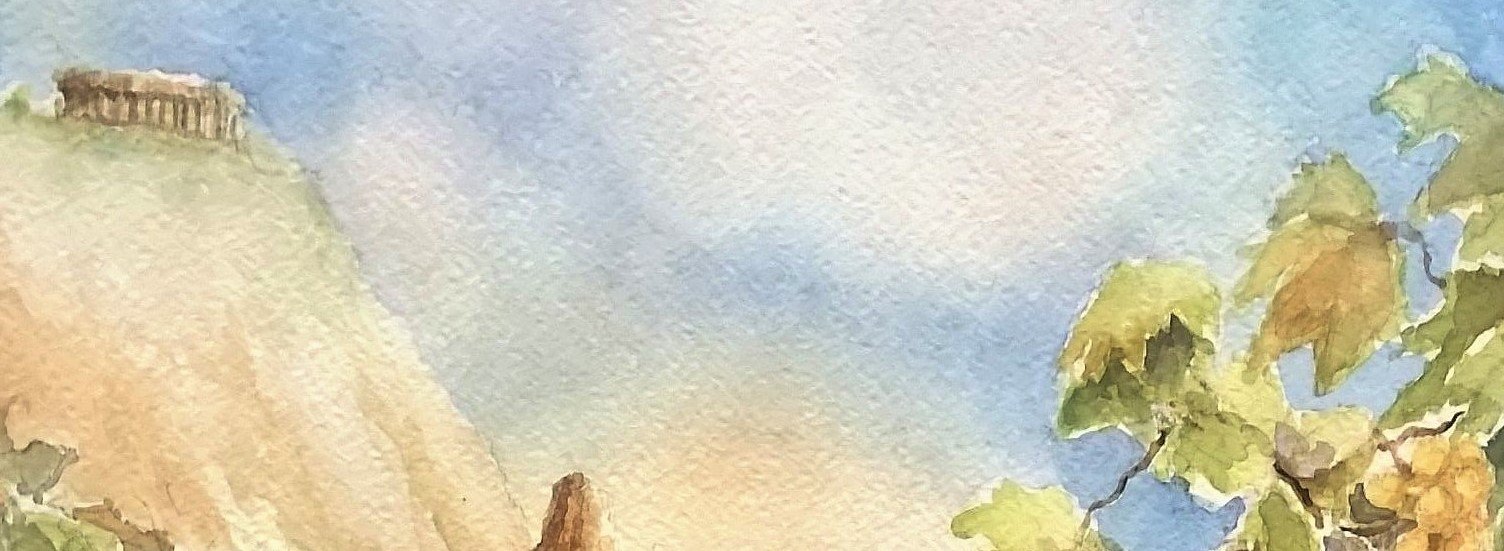
deatil-3
temple of Jupiter in Terracina - Lazio - Italy
Condivido una perla scavata tratta dal repertorio di uno dei più grandi direttori d'orchestra di tutti i tempi.
George Solti.
Da brividi!
I share a carved gem from the repertoire of one of the greatest conductors of all time.
George Solti.
Creepy!


discovery-it
@discovery-it
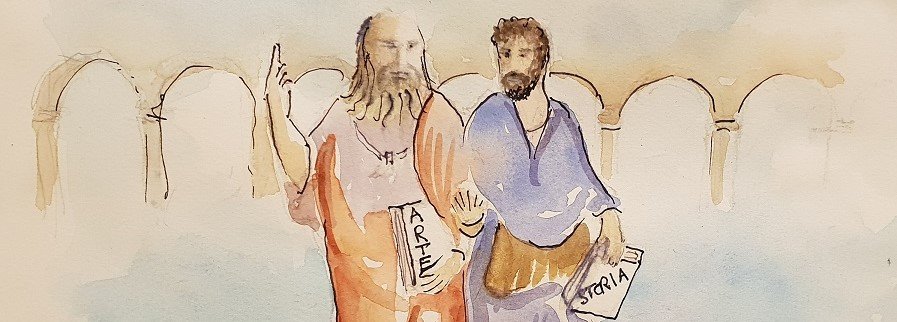
Vieni a trovarci sulla prima rivista dedicata al mondo dell'arte&storia




